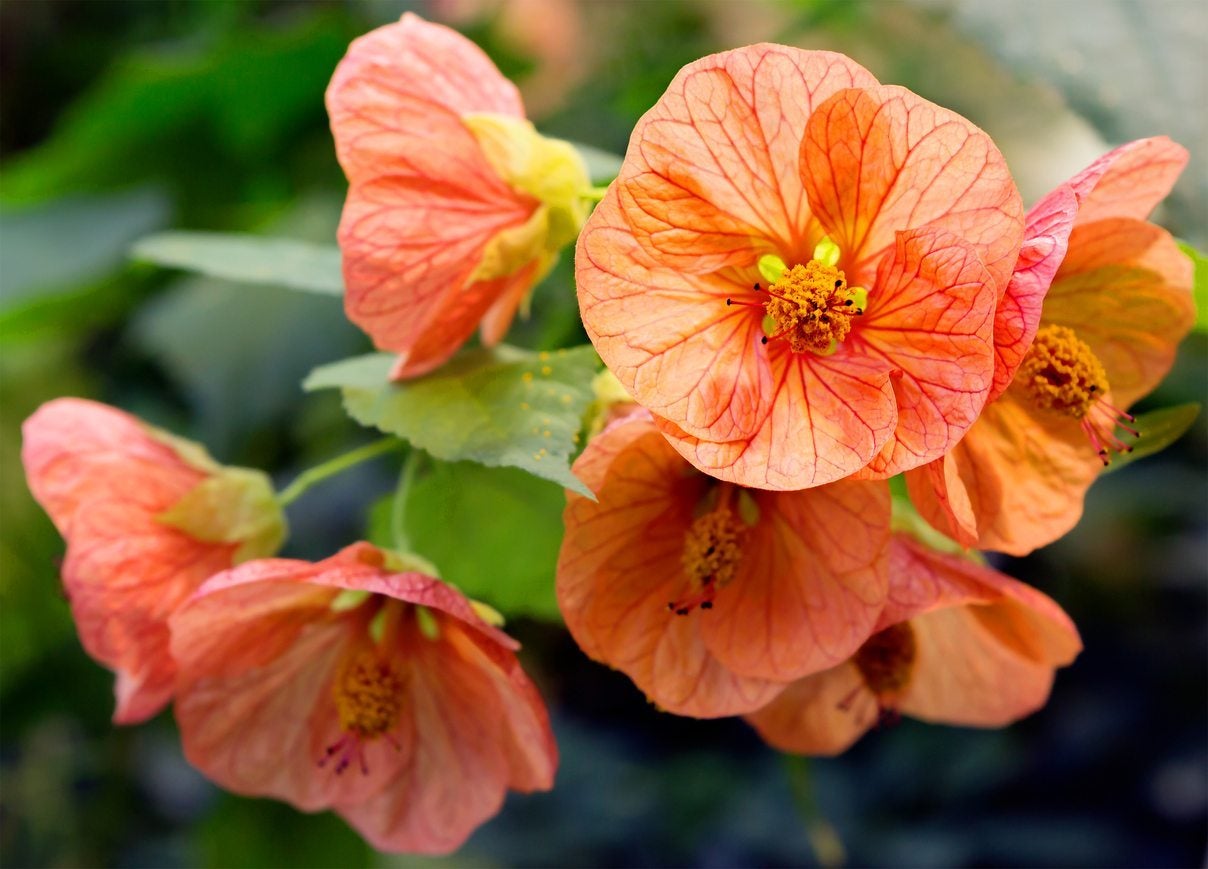Abutilon Pruning Tips: When To Prune A Flowering Maple


Abutilon plants are showy perennials with maple-like leaves and bell-shaped flowers. They are often called Chinese lanterns because of the papery blossoms. Another common name is flowering maple, because of the lobed leaves. Trimming abutilon is essential to their continued health and beauty. You’ll need to learn how to prune an abutilon if you are growing one of these plants. Read on for information on trimming abutilon as well as abutilon pruning tips.
Pruning Abutilon Plants
Abutilon plants are native to South America, Africa, and Australia. They are tender evergreens that need a growing site with some sun to produce the lovely, lantern-shaped flowers. They also need some shade to thrive. Why do you need to think about pruning these plants? Abutilons get leggy as they grow. Most plants are prettier and more compact if you start pruning abutilon plants regularly. In addition, broken or diseased branches can allow in or pass on infection. Pruning out damaged and diseased branches is essential. If you are wondering when to prune a flowering maple, think late winter or early spring. Abutilon plants flower on current growth. That means that you’ll have more flowers if you prune a flowering maple before spring growth begins.
How to Prune an Abutilon
When you start pruning abutilon plants, you’ll always want to sterilize your pruners first. It’s one of the most important abutilon pruning tips and prevents the spread of disease. The next step in how to prune an abutilon is to remove any and all plant parts that suffered winter damage, as well as other damaged or dead shoots. Remove the branches just above a stem junction. Otherwise, trimming abutilon is a matter of personal taste. You prune a flowering maple to create the look and shape you want. Another one of those abutilon pruning tips; never prune a flowering maple by removing more than one-third of a stem. That leaves the plant with enough resources to maintain its vitality. However, if you find that the plant is too dense, you can remove bare or aging stems. Just cut them at the plant’s base.
Sign up for the Gardening Know How newsletter today and receive a free copy of our e-book "How to Grow Delicious Tomatoes".

Teo Spengler is a master gardener and a docent at the San Francisco Botanical Garden, where she hosts public tours. She has studied horticulture and written about nature, trees, plants, and gardening for more than two decades, following a career as an attorney and legal writer. Her extended family includes some 30 houseplants and hundreds of outdoor plants, including 250 trees, which are her main passion. Spengler currently splits her life between San Francisco and the French Basque Country, though she was raised in Alaska, giving her experience of gardening in a range of climates.